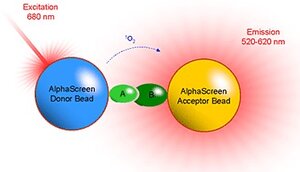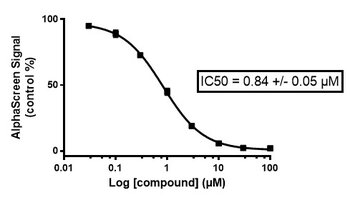Introduction
AlphaScreen™ (Amplified Luminescent Proximity Homogeneous Assay), developed by PERKIN ELMER, is bead-based assay technology used to study biomolecular interactions in a microplate format.
This assay is homogeneous and requires only small amounts of protein.

